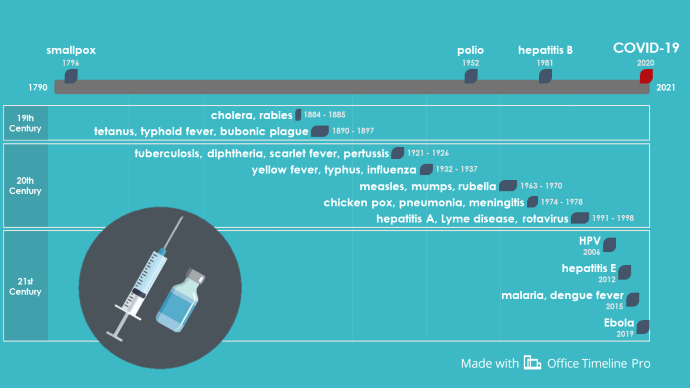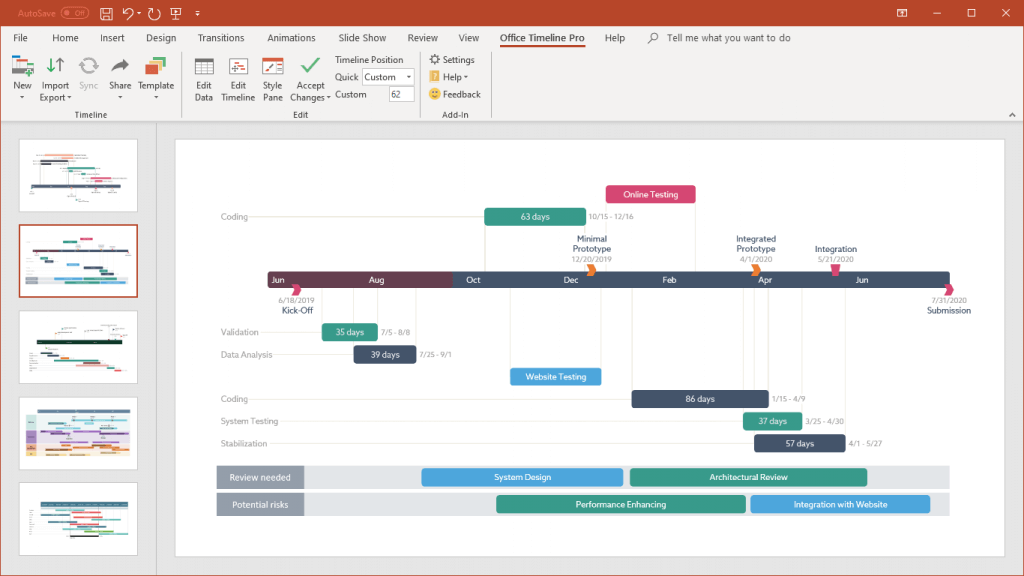updated on January 4, 2020

Although the world’s first vaccine (against smallpox) was developed by the English physician Edward Jenner in 1796, the practice of immunisation goes back to an earlier time in the Eastern world. Drinking snake venom to confer immunity to snake bites and smearing a skin tear with cowpox to gain immunity against smallpox were practiced among the Buddhist monks of the 17th century China.
Since Jenner’s critical discovery and up until the late 1950s, all the vaccines implemented throughout this time span were developed at a fairly slow rate. It was the new scientific discoveries and technologies of the last several decades that led to a more rapid advance in molecular biology, virology and vaccinology.
To overview some of the most relevant vaccination-related facts, we have created this blog post, which also includes the History of Vaccines Timeline – a visual chronology of the main prophylactic vaccines developed since Edward Jenner’s breakthrough.
What are vaccines and how do they work?
A vaccine is a biological substance produced to ensure active acquired immunity to a certain infectious disease. Typically prepared from the causative agent of that disease (the weakened forms of the microbe, its toxins or surface proteins), a vaccine ”trains” our immune system to recognize and destroy the harmful agent and any of its associated microorganisms. The administration of vaccines is called vaccination.
There are two types of vaccines:
- Prophylactic (preventing and ameliorating the effects of a future infection);
- Therapeutic (fighting a disease that has already occurred).
Where do the words „vaccine” and „vaccination” come from?
Both terms were coined by Edward Jenner and derived from the name that he used to refer to cowpox, that is Variolae vaccinae (which means „smallpox of the cow” in Latin). Jenner’s terminology first appeared in his 1798’s Inquiry into the Variolae Vaccinae Known as the Cow Pox, a study that documents the protective action of cowpox against smallpox. In 1881, as an homage to Jenner’s work, Louis Pasteur proposed that these two be extended to cover all the new inoculations that were being developed at the time.
How it all began
While serving as a surgeon/apothecary appretince (sometime during the late 1760s), Edward Jenner found out that some of the dairy workers in the rural areas never contracted the often-fatal smallpox disease because they had already caught cowpox, which manifested with milder effects in humans. He thus proceeded to collect pus from a cowpox-infected milkmaid and administer it to an 8-year-old boy.
Six weeks later, Jenner inoculated the boy with smallpox and observed that he didn’t contract the disease. This small victory encouraged the physician to extend his studies, which resulted in a report that proved his vaccine was safe in both children and adults.
Vaccination becomes widespread
After Jenner’s breakthrough, it was Louis Pasteur that carried the torch and made headway in immunization by introducing vaccines for chicken cholera and anthrax in the 1880s. Due to these advances, vaccination gained attention and became a matter of national prestige, with compulsory vaccination laws being passed in the late 19th century.
During the 20th century, several successful vaccines were introduced (against diphtheria, measles, mumps and rubella), but the major highlight resulted from the development of the polio vaccine (the 1950s) and the eradication of smallpox (1960s – 1970s).
But it wasn’t until the Coronavirus pandemic that the role of vaccines became evidently essential and people around the world breathed more easily when the first COVID-19 vaccine was introduced in late 2020.
About the History of Vaccines Timeline
The History of Vaccines Timeline was designed with Office Timeline, an intuitive add-in that enables you to easily create compelling timelines, Gantt charts and other types of chronology graphics right inside PowerPoint. You can download the History of Vaccines Timeline PowerPoint slide for free, copy and share it, and you can update or customize it using the Pro Edition of the tool.

Turn project data into professional timelines
Get the advanced features of Office Timeline Pro+ free for 14 days.
Get free trial